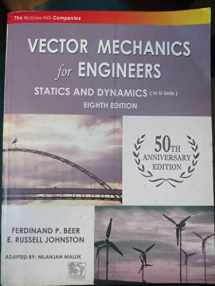
Vector Mechanics for Engineers: Statics
Book details
Summary
Description
"Vector Mechanics for Engineers: Statics" and its companion volume, "Vector Mechanics for Engineers: Dynamics", are designed to develop in first-year engineering students the ability to analyze any problem in a simple and logical manner, and to apply basic engineering principles to its solution. Each chapter begins with an introduction and a set of learning objectives, and ends with a chapter review and summary.The body of the text is divided into units, each consisting of one or several theory sections, one or several sample problems, and a large number of problems to be assigned during the class or as homework. The sample problems serve the double purpose of amplifying the text and demonstrating the type of neat, orderly work that students should cultivate in their own solutions. This allows students to organize in their minds the theories and solution methods learnt before they tackle the assigned problems. Each unit corresponds to a well-defined topic and can generally be covered in one lesson.The key features are: practical applications are introduced early; new concepts are introduced in simple terms; fundamental principles are placed in the context of simple applications; free-body diagrams are used both to solve equilibrium problems and to express the equivalence of force systems; a four-colour presentation uses colour to distinguish vectors; and optional sections offer advanced or speciality topics. It includes a wide range of problems develops application skills: sample problems; problems for students to solve on their own; homework problems sets; review problems; and problems to be solved using computational software.


We would LOVE it if you could help us and other readers by reviewing the book
Book review



